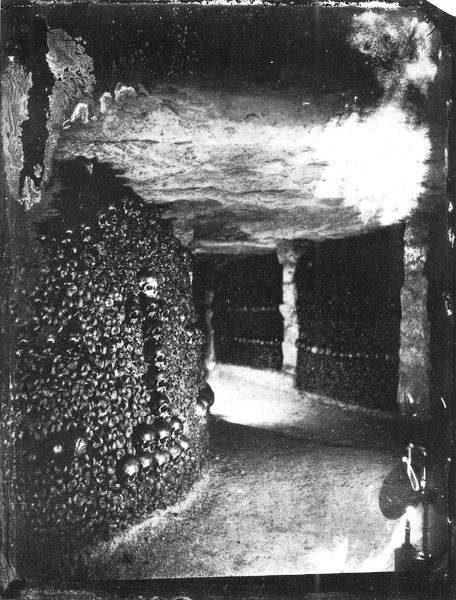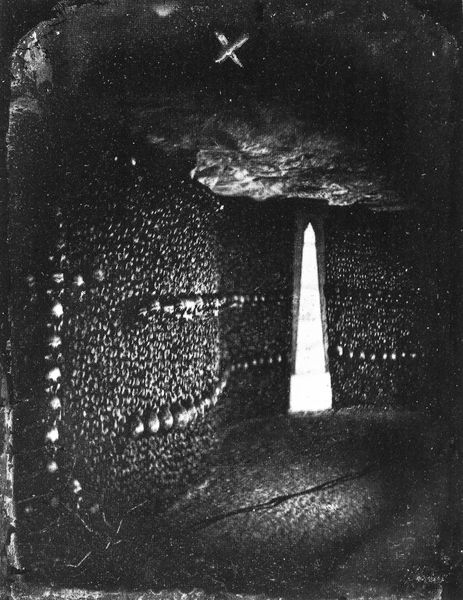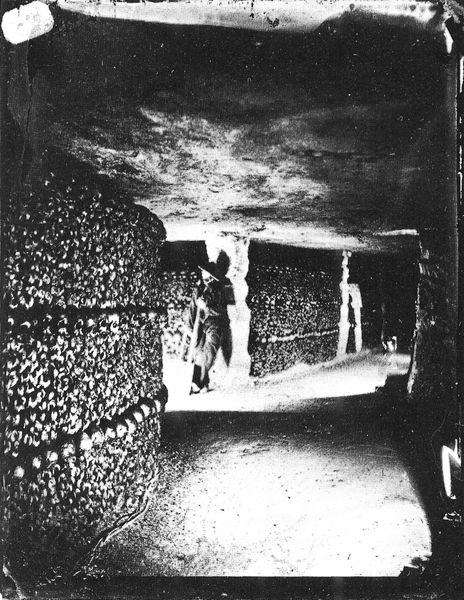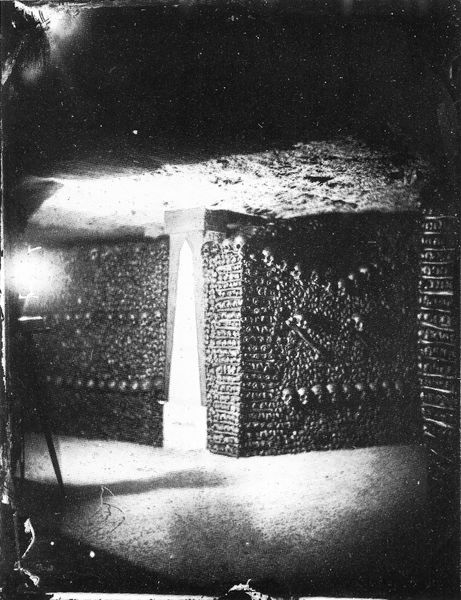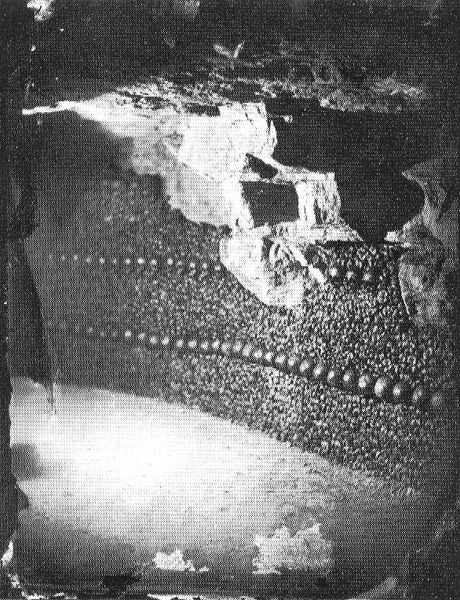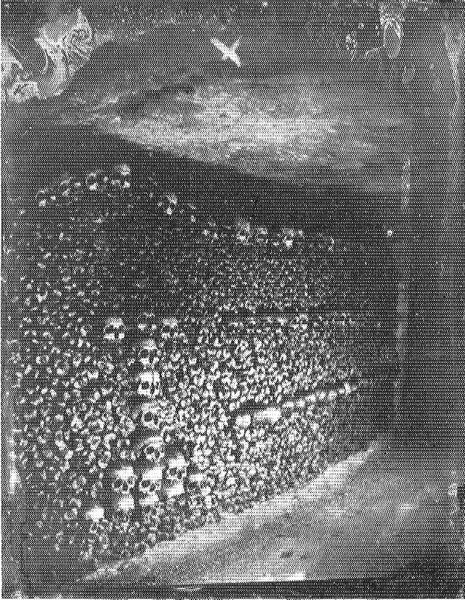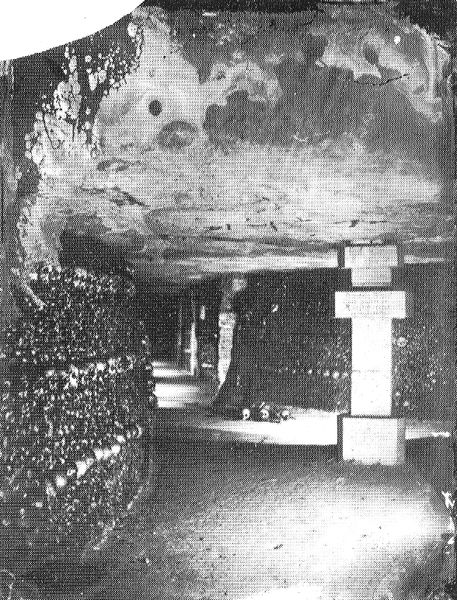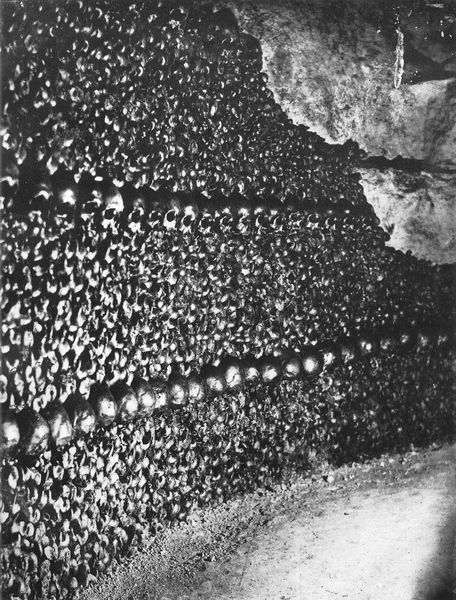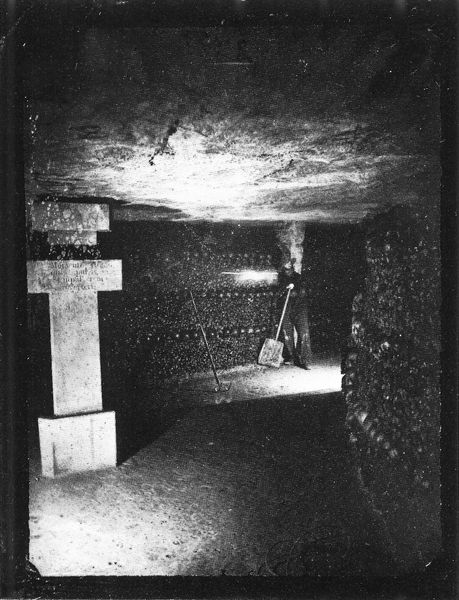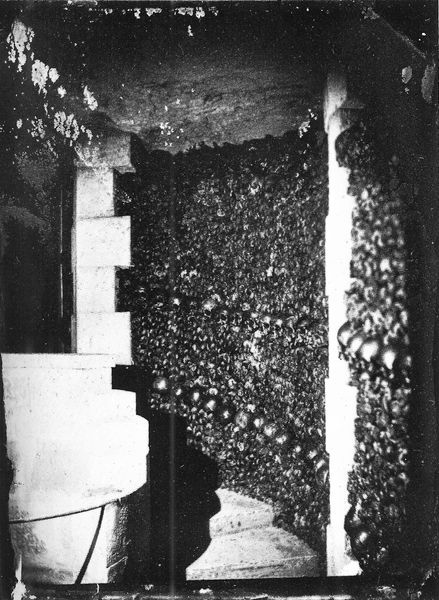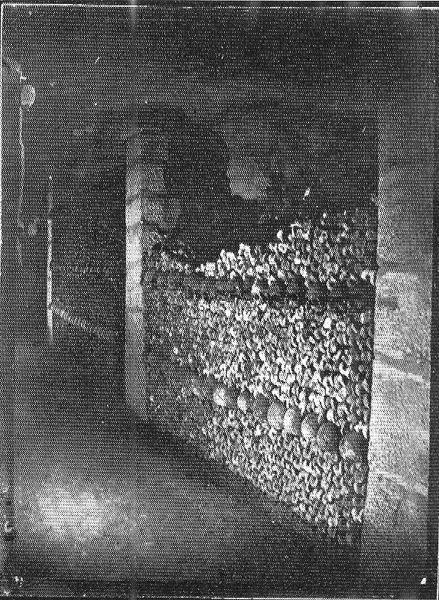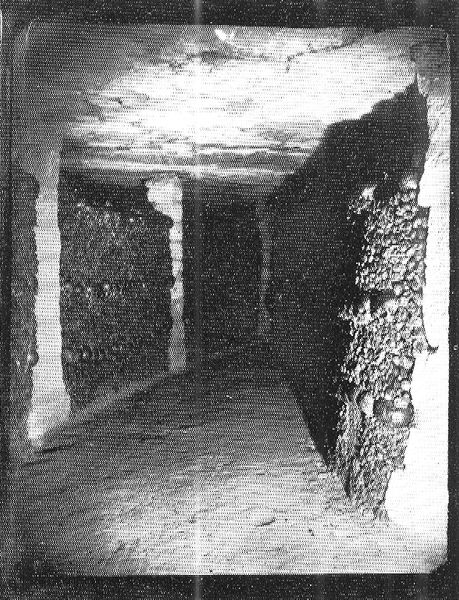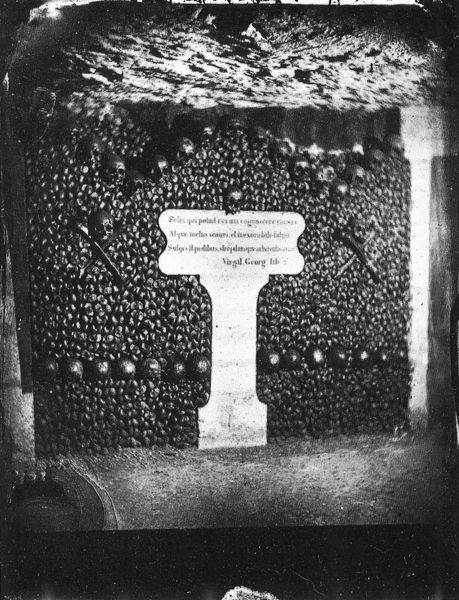
Copyright: Public domain
This photograph of the Catacombs of Paris was taken by Felix Nadar, likely sometime in the 1860s, using early photographic processes. What's striking is Nadar’s use of artificial light, powered by early batteries. It illuminates the walls of stacked bones, highlighting their sheer volume and the labor involved in their organization. The remains, moved from overcrowded cemeteries, represent a cross-section of Parisian society, united in death. The very act of arranging these bones, of transforming them into a macabre monument, speaks to a social need to manage mortality on an industrial scale. Nadar, venturing into this subterranean world, uses new technology to capture a space where the past is literally piled high. This early photograph not only documents the site but also subtly critiques the social forces that led to its creation, blurring the lines between art, documentation, and social commentary. Ultimately, by understanding the context and means of production, we see that the photograph is more than just an image, it’s a historical artifact in itself.
Comments
No comments
Be the first to comment and join the conversation on the ultimate creative platform.
